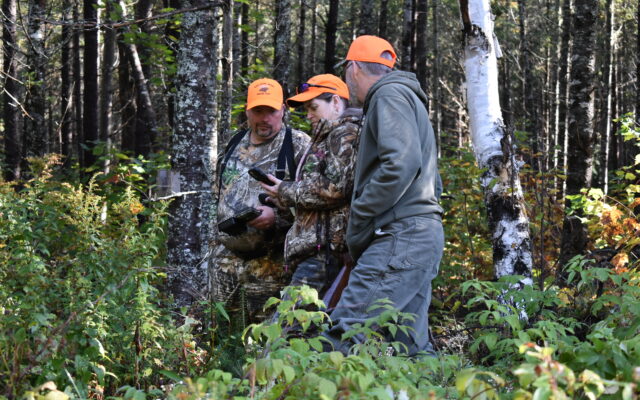
Maine hunters go to extreme lengths to stop people from stealing their trail cameras
By Pete Warner, Bangor Daily News Staff
Hunters of a certain age will remember the “Trail Timer.” The small plastic box contains a battery-operated clock and clips to a string, which is stretched across a game trail and attached to another tree or bush.
When placed at the proper height, a deer, bear or other game animal dislodges the string when it walks by and stops the timer, telling the hunter when the animal passed through.
Wildlife monitoring technology has made huge strides since then. Remote cameras can not only record photos and color video, but track the date, time, temperature and even barometric pressure.
The increased use of modern game cameras, some of which are quite valuable, also means they are tempting targets for thieves. While such theft is not an epidemic — the Maine Warden Service receives reports of several stolen trail cams each year — it’s become prevalent enough that hunters are taking extra precautions to deter any outdoors people with a case of sticky fingers.
“I don’t think there’s a systemic issue by any means,” said Cpl. Kris MacCabe, the landowner relations specialist for the Maine Warden Service. “I think that there’s a few bad apples out there that do steal game cameras.”
Hunters agree the majority of people who frequent the woods are good sports.
“Most hunters I run into just wave at the camera and walk by,” said Ivan Beaulieu of Smithfield.
Victims of trail camera theft sometimes share their stories with fellow hunters and on social media. Stolen cameras mean a loss of time, money and the images.
“Fortunately, the majority of the hunting community are honest, hardworking people that would never bother your gear,” said Dennis Bradford, who has had a tree stand and cameras stolen in the past.
“Everything was secured with locking cables and a steel security box on the camera. A lock only keeps the honest man out,” Bradford said.
Hunters are coming up with creative ways to protect their investment.
After making attempts to conceal a trail camera, the next line of defense is to attach it to a tree or other object using a cable or other mechanism with a lock. Some folks use metal boxes that are screwed or bolted into the tree to secure the unit in which the camera is stored.
Hunters also say placing cameras where they are partly or mostly concealed by branches, while still providing a view of the area, helps keep them out of sight. Others suggest putting the camera 8 to 10 feet up in a tree, which makes it harder to see.
Game cameras vary greatly in price, from as low as $30 for a standard model to several hundred dollars for a wireless cellular camera with a data plan. Some higher-priced cameras have features such as the ability to snap a photo and, within seconds, send it to the owner’s cell phone.
Thus, someone walking in front of such a camera has their image captured. And cameras operating with cellular technology can be located by virtue of the signals they send and receive from towers.
Some cameras even use a solar panel to charge the batteries, meaning they can be left in the woods for long periods of time without being disturbed.
Hunters, especially those who have experienced theft or vandalism, say two cameras are better than one. While one is aimed at the target area, another is positioned to monitor the first, along with other equipment such as a tree stand or blind.
James MacArthur of Canaan is fortunate not to have had a camera or gear stolen, but he’s not taking any chances. He said it’s a big investment to buy blinds and cameras and he doesn’t want to risk losing them.
“My blinds are almost $200 apiece,” he said.
So he sets up a second camera — just in case.
“I usually have a camera facing out from my blind so I can see what’s in the area in terms of deer,” MacArthur said, “and then I set another camera off to a different angle that watches my camera and my blind, so that if anybody was to come in there and take any of my stuff or do anything, they wouldn’t see the camera.”
Maine has a law governing the placement of game cameras. People using game cameras may not place one on another person’s private land without written permission. And all cameras must be labeled with the person’s name and contact information.
That applies to all private property, including tracts of forest land owned by large companies in places such as the North Maine Woods, for example.
“If a landowner comes across it on their property, they have the right to take that,” MacCabe said.
Wardens who find unlabeled cameras routinely take them into evidence. MacCabe said unlabeled cameras placed without permission raise suspicion and also are sometimes associated with illegal activities.
“We do get some stolen camera complaints,” he said, “but a lot of times there are other legal issues that are going on and there’s a reason why it’s not labeled.”
He stressed that in addition to any concealment efforts, obtaining written landowner permission and labeling cameras on the outside with a name and contact information are the best deterrents to potential thieves.
“The majority of the time, you’re probably going to be OK,” MacCabe said.
MacCabe said in addition to the benefits for hunters, the increasing use of game cameras has sparked widespread interest in wildlife watching and in hunting, which may encourage more young people to pursue outdoor activities.
As it turns out, game cameras also occasionally fall victim to the animals they are attempting to photograph. Moose have been seen breathing into and licking trail cameras.
And black bears have been known to claw and bite cameras, ripping them right off the trees.